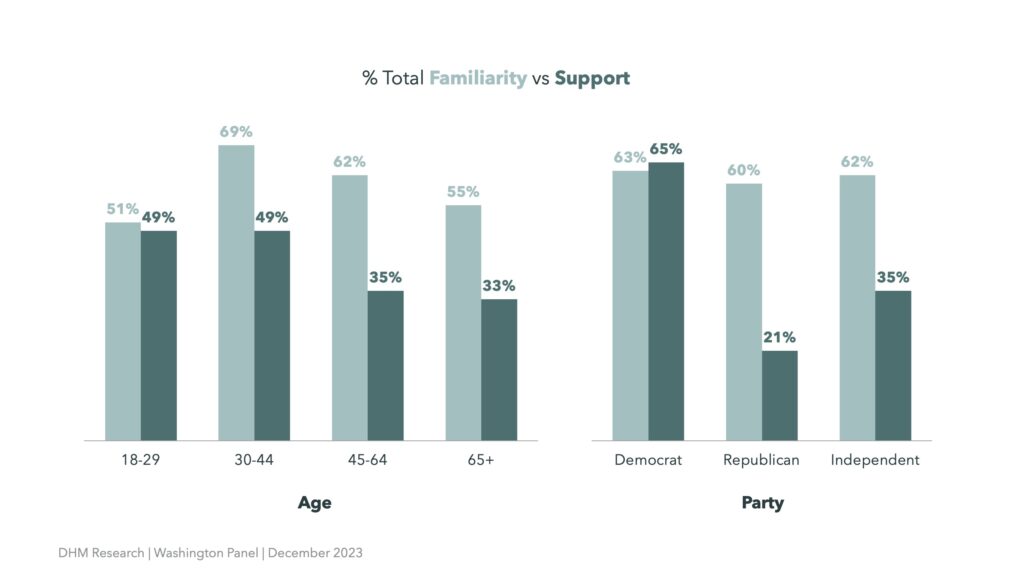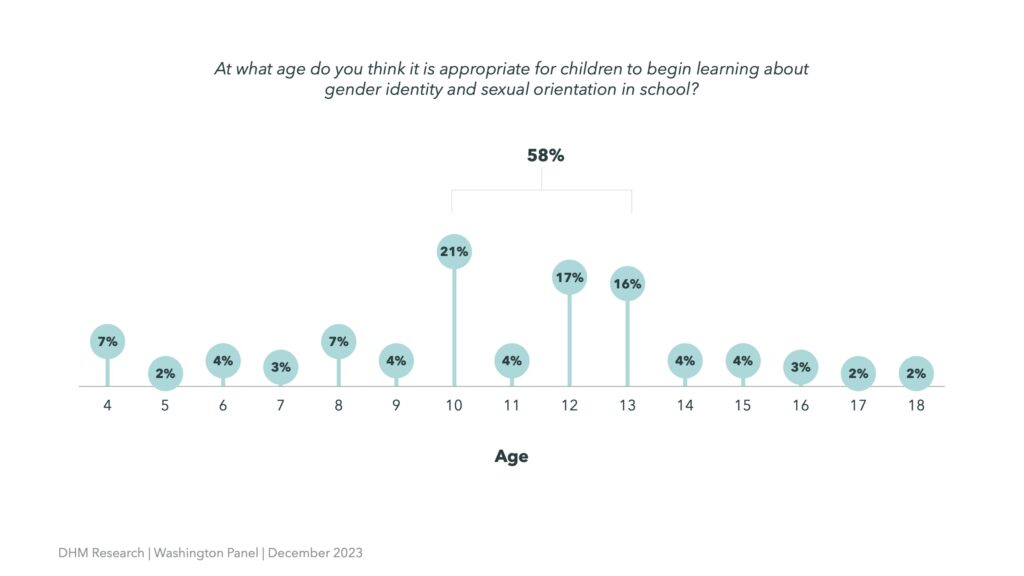Two social and academic fields—Critical Race Theory (CRT) and gender and sexuality studies—have become hot topics in public education discourse. Though these have been discussed nationally for some time, the debate has recently resurfaced as legislation passed in the early 2020s takes effect. In our most recent survey, we aimed to gauge public opinion on these topics and measure overall impressions of Washington’s education system.
Residents are split on the inclusion of CRT and gender/sexuality studies in public school curriculum.
A majority of Washingtonians (60%) report being very or somewhat familiar with Critical Race Theory, yet overall opinions are fairly split as to whether or not CRT should be taught in local public schools (41% support, 35% oppose, 24% don’t know). The data suggests that respondents’ age and political affiliation are more likely drivers of support than familiarity. Those ages 18-29 report the least familiarity with CRT yet tie with 30-44 years old as the most likely age groups to support the inclusion of CRT in public school curriculum (49%). Folks ages 45 and older are less likely to support (~34%) regardless of familiarity. And, despite all political parties reporting nearly equal amounts of familiarity, Democrats (65%) are about three times more likely to support CRT inclusion than Republicans (21%).

We see similar divisions around the idea of students learning about gender identity and sexual orientation in school. Again, overall opinions are split (45% support, 48% oppose) with political affiliation playing a major role. The two major parties are almost exact opposites: 73% of Democrats support teaching about gender and sexuality in schools while 73% of Republicans oppose. Independents (those who didn’t identify as a Democrat or a Republican) are more moderate in their views but are still more likely to oppose (58%) than support (34%). We also observe geographic differences; gender identity and sexual orientation in schools has majority support in both King County (52%) and the Puget Sound (54%).
We asked those who support at what age they feel it is appropriate for children to start learning about gender identity and sexual orientation in schools. Puberty seems to be the defining marker with nearly 3 in 4 agreeing that children should be at least age 10 or older, and a majority (58%) indicating a preference between ages 10 and 13.

Impressions of the WA education system are broadly positive.
Despite differences around curriculum, overall impressions of local districts, teachers, and teachers’ unions are positive. Washingtonians feel the most positive toward their local teachers (73%) and also view school districts (61%) and unions (56%) in a positive light. Similar to opinions about curriculum, Democrats consistently feel more positively toward these entities than their Republican or Independent counterparts. More than 8 in 10 Democrats feel positively toward teachers and more than 7 in 10 feel positively toward their local district and teachers’ unions. Since there is not much difference in area, it suggests that these partisan differences are driven by ideology more than geography.
